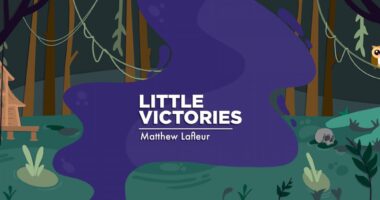I’m still learning how to get busy living in life with FA
Lessons from 'Shawshank': Balancing hope for the future with living fully today

“This might be even better than a Kubrick,” I thought as “The Shawshank Redemption” appeared on my screen. I was FaceTiming with my manager, Ethan, and his son, who live in upstate New York — 1,461 miles from my South Louisiana home — and we were streaming the film at the same time.
A movie night with friends isn’t typically remarkable, but my Friedreich’s ataxia (FA) keeps me mostly tethered to home, unable to drive, and distanced from much of my social world. That’s why our smooth video call during the movie still thrills me. Ethan and his son even included me as they “put the chickens to bed,” tucking their egg-laying flock into the coop before nightfall.
We’d originally planned to watch a Stanley Kubrick classic, but pivoted at the last minute. Since I’d been so moved by “Stand by Me,” neither Ethan nor I could believe I’d never seen “Shawshank.” Before the title rolled, I sensed the lesson it’d offer about walls — Shawshank State Prison’s and mine. That parallel rang painfully true, but another lesson followed: Survival means choosing to live, whether your prison is Shawshank or FA.
When Andy Dufresne, the film’s protagonist, said, “I guess it comes down to a simple choice, really. Get busy living, or get busy dying,” his words struck hard.
The notorious prison of FA
A real prison and life with FA may seem worlds apart, but with “Shawshank,” the parallels are undeniable.
Reactions to an FA diagnosis vary. Some people, like Andy, carry on stoically and in silence. Others, like the film’s unnamed “fresh fish,” break down in tears on that first terrifying night.
Regardless, FA reduces one’s capabilities softly, day by day, until the world fades to silence. In my case, I awoke one day dependent on a wheelchair, unable to drive, and struggling with hand dexterity and slurred speech, unsure when exactly that all happened. My small Louisiana hometown may not be surrounded by iron bars, but I know confinement. No freedom to roam, no spontaneous visits with friends. For those of us living with FA, that sense of enclosure is painfully real.
Like inmates staring at cell walls, we ask ourselves: Now that we’re here, what do we do?
Getting busy
I’d heard the phrase many times before, but that night it landed fresh: “Get busy living, or get busy dying.” Maybe it was FA’s confinement echoed by those prison walls, or maybe I’d never truly felt its power until hearing it in the context of the film. That moment revived my daily conundrum: chasing a cure for FA while striving to live meaningfully in the present.
To me, a cure seems like freedom. Skyclarys (omaveloxolone), the first and only therapy approved for FA, carries that promise. It’s not just a medication, but proof that progress matters, bringing steadier days and little victories of strength and coordination for many.
Then there’s nomlabofusp, a terribly named, experimental protein-replacement therapy that I root for wholeheartedly. Early clinical results show it raises frataxin levels and could potentially be the first disease-modifying therapy for FA.
Yet while scientific promise illuminates the horizon, real life unfolds today. I rely on physical therapy, mobility aids, and daily routines, tools that help me get busy living within FA’s constraints. I’ve learned that acceptance is not defeat. It means choosing joy, connection, creativity, and purpose despite disease progression.
And so I weigh my options: Do I aim to eradicate FA someday, or live as fully as I can now? Tunnel out of Shawshank, or turn this cell into my home? Which choice involves getting busy living?
The FA redemption (for now)
I haven’t solved that puzzle yet, but I’ve found a kind of peace. It isn’t one truth or the other. I both accept the present and hope for freedom. I can dream of a cure and cherish today’s moments at the same time. I can get busy living even inside whatever prison I face.
Some people find safety within walls. Maybe you’ve built a meaningful and fulfilling life despite FA’s weight. Your resilience matters. I’m proud of you. Others are restless, digging tunnels to escape: raising awareness, driving research, dreaming of tomorrow.
Neither path is wrong. In “Shawshank,” “Red” Redding, the narrator, adapts while Andy escapes, and both end up stronger. I move between both poles — never fully content, but always pressing on. And maybe pressing on is another way to get busy living. Whether you focus on tomorrow or stay rooted in today, never stop lifting your head.
I don’t know if I’m doing it “right.” I know I still hold on to hope for a cure, but I’m learning to live well in the moment — raising awareness and laughing with friends on movie nights. I want to get busy living, even if I’m not entirely sure what that looks like.
Note: Friedreich’s Ataxia News is strictly a news and information website about the disease. It does not provide medical advice, diagnosis, or treatment. This content is not intended to be a substitute for professional medical advice, diagnosis, or treatment. Always seek the advice of your physician or another qualified health provider with any questions you may have regarding a medical condition. Never disregard professional medical advice or delay in seeking it because of something you have read on this website. The opinions expressed in this column are not those of Friedreich’s Ataxia News or its parent company, Bionews, and are intended to spark discussion about issues pertaining to Friedreich’s ataxia.








Jolie Lizana
Thank you for sharing this! You should be ashamed of yourself for not seeing The Shawshank Redemption before now, but because you were brave and open in sharing your very touching story of your flawed movie choices until now, I'll give you a pass. Oh, and thank you for writing the rest, too. ; )
Matthew Lafleur
“flawed movie choices”????
Them’s fightin words.